
Justifiably it is called the land of exotic scenic beauty. It is also acclaimed as the paradise on earth and a nature lover’s wonderland. Srinagar, the capital of Jammu and Kashmir located in a beautiful valley at an altitude of 1730 metres has everything to offer to a serious visitor or a casual and carefree tourist around its serene, breathtaking, lively, and mesmeric Dal Lake. Innumerable exquisitely decorated Shikaras, sometimes having outlandish names can be seen floating all over. On the other hand, the legendary houseboats parked in rows on the banks in a group and at key locations, not only are unique to the place but they do make a definite statement by creating a colourful panorama. They attract visitors from all over the world even if situation in the valley may not be congenial. Their mere sight while taking a leisurely stroll on the famous Boulevard from the Nehru Park corner to the sprawling Centaur Hotel lifts one’s spirits. It also provides much sought after succour to the tired minds and ruffled feathers.
2. Let us explore this marvellous stress buster. According to a rough estimate, there are more than thirteen hundred houseboats in Srinagar, of which eight hundred alone brighten up the scenario of the Dal Lake by becoming its coveted crowning glory. The rest five hundred are on the Nagin Lake and the Jhelum River, flowing in the exalted company of pine, deodar, chinar, willow and poplar trees.
3. It’s a completely different and unique world once you venture to step into a houseboat. These are mostly accessed by the Shikaras. While approaching them, the day to day life of an average Kashmiri can be noticed if one also looks at the Shikaras selling pleasing and colourful flowers, kesar, green vegetables, fruits, handicraft items, and imitation jewellery. Of all the things the Shikaras having floating studios steal the show. The poses suggested remind vividly of Shammi Kapoor and Sharmila Tagore of Kashmir Ki Kali fame. Occasionally, fishing freaks, moody hookawalas and the gorgeous housewives try their hands at the shikaras in the somewhat congested ‘colony’ of the houseboats.
4. Apart from making available comfortable accommodation at a relatively competitive price and luring the nature lovers, these ‘parked floaters’ house grocery shops, handicraft stores, cloth shops, studios, beauty parlours etc. While passing through one ‘water driveway’ having a sizeable number of houseboats, one gets an impression as if the typical romantic scenario of Venice has been straightway ’transplanted’ into this part of the world. While one desires to spend more time in a slow motion shikara, appropriately named, Harmony, Washu Sheikh, the boatman does reflect his commercial intentions and other mundane priorities. Consequently, a sort of disconnect situation is narrowly avoided.
5. While ultimately getting closer to a house ‘over’ a boat,one is greeted with a typical Kashmiri smile of the owner or caretaker. Its attractive signboard and distinct balcony stand out in the middle of a huge water body. Washu Sheikh,informs that the average width of a houseboat is 18 feet while its length will vary from 100 to 120 feet. Height of the ceiling is barely seven feet. It takes years to make, develop, beautify and ‘launch’ this special ‘craft’ for commercial proposition. None of the owners, however, divulge the exact time taken in construction. The improvements, additions, alterations and not to be forgotten, change of curtains and upholstery are taken for granted features.
6. Those managing the boats appear encouraged with the rapid inflow of the tourists, more so, the tourists actually spending a night or two. The occupancy rate directly depends upon the prevailing security scenario. Renovations are consistent and continuous processes reflecting a definite influence of the interaction patterns with the tourists. The names, such as, Manhattan, owned by the tall and handsome, Gulam Qadir Karnai and New Manila managed by shy but shrewd Bashir were reportedly inspired by the enthusiastic tourists from the USA and Philippines respectively. More often than not, names of famous places are considered for adoption simply because they are in news or the owner or his friends hear spicy tales about those places through the medium of newspapers, T.V. or the feature films.
7. While the houseboats are well protected vis a vis the vagaries of nature, most of them don’t have a provision for a terrace, a facility which could possibly augment their overall grandeur. The unfortunate and sickening flow of the used water and night soil into the already shrinking lake, apart from increasing the level of water pollution, is very much capable to cause insurmountable environmental hazards. A weed removal scheme under execution for many years in addition to the early morning manual clearance by the petty boatmen is hardly bearing the expected fruits. Nonetheless, it is heartening to take note of the voluntary efforts of a few former foreign tourists. 8. 8. As we slowly climb up the narrow wooden ladder by leaving aside the memories of a gentle shikara ride, unique and intricate carving over the deodar wood in the balcony greets us to this historic watery abode. The owner is conspicuous by his presence. After mincing selected words of pleasantry in a few Indian and European languages, he displays his infectious smile and hospitable attitude. The balcony has a sufficient space for standing to inhale fresh air or to admire the breathtaking scenario of the Char Chinar, Shalimar Bagh, Nishat Bagh Cheshma Shahi and Siraj Bagh, the Tulip garden situated on the slopes of Zabarwan Mountains. The sofa sets and the benches made of walnut wood, needless to say, add to the charm of the balcony. One can distinctly notice the designs and patterns depicting the endemic birds and animals, bunches of cherry, apple, peach, pears, pansies, daisies and the Chinar leaves.
9. Adjacent to the balcony, there is a large drawing cum dining room having beautiful pieces of Walnut furniture, sleek racks, attractive cupboards having ethnic cutlery and chinaware and the curtains highlighting local designs and embroidery skills. These are, no doubt, eye catching experiences. Inside another houseboat, one could come across extremely attractive Crewal embroidery over the bed covers, sofa upholstery and the curtains. One is also pleasantly surprised to see a couple of books in one corner. Mudasir, the owner, who has studied only upto 8th standard, gets obviously embarrassed when praised about the sheer range and subjects of his collection. He loses no time in explaining that the books have neither been purchased by him nor is he in a position to read them. Rather, these have been left behind by some magnanimous foreign tourists and domestic visitors.
10. A round of the carpeted corridor, bed room and its ‘master’ counterpart turns out also to be an enriching experience. While the double bed has comfortable mattresses, clean bed sheets and cute pillow covers, the attached bath has running hot and cold water. The tiled walls, latest shower, good looking washbasin and an apology to a bathtub are not to be missed. While taking note of these items, one stresses an ample scope to improve the design of the window as also upgrade the thickness and the quality of the curtains.
11. Subsequent to a satisfying round of the whole complex, sipping of clear and green Kahwa, with crisp Hide and Seek biscuits turns out to be an unforgettable experience, especially on noticing a sizable dip in the evening temperature. As Washu Sheikh sends a polite reminder to hurry up, the journey to the ‘kingdom’ of the houseboats is certain to end. Upon offering a reasonable bakshish to Ahmed Khan, the caretaker, one is reluctant to say a fond goodbye. The bond of temporary camaraderie comes to a sweet end with the utterance of Shukriya and Shabba Khair
12.Back to the congested banks of the Dal Lake, it’s the life as usual at the onset of dusk. I do not forget to purchase a graceful Kashmiri coat and one or two pieces of Paper Machie items to add to my collection. While the fun loving tourists struggle in the sudden drizzle to win over the clever vendors and autowalas, one distinctly hears the soothing sound of the Ajaan emanating from the holy and historic shrine of the Hazratbal. The sound of evening Aarti of the Shankaracharya temple is also audible, almost simultaneously.
13. Securing entry into an unknown but clean hotel at the down town Lal Chowk, one does not refrain from expressing sympathies for the toiling Shikara and houseboat men. Aren’t they ignored and often left rudderless due to immune attitude of those responsible for obstructing as also maintaing public order? I ask myself while switching off the lights and pretending to hit the pillow.
2. Let us explore this marvellous stress buster. According to a rough estimate, there are more than thirteen hundred houseboats in Srinagar, of which eight hundred alone brighten up the scenario of the Dal Lake by becoming its coveted crowning glory. The rest five hundred are on the Nagin Lake and the Jhelum River, flowing in the exalted company of pine, deodar, chinar, willow and poplar trees.
3. It’s a completely different and unique world once you venture to step into a houseboat. These are mostly accessed by the Shikaras. While approaching them, the day to day life of an average Kashmiri can be noticed if one also looks at the Shikaras selling pleasing and colourful flowers, kesar, green vegetables, fruits, handicraft items, and imitation jewellery. Of all the things the Shikaras having floating studios steal the show. The poses suggested remind vividly of Shammi Kapoor and Sharmila Tagore of Kashmir Ki Kali fame. Occasionally, fishing freaks, moody hookawalas and the gorgeous housewives try their hands at the shikaras in the somewhat congested ‘colony’ of the houseboats.
4. Apart from making available comfortable accommodation at a relatively competitive price and luring the nature lovers, these ‘parked floaters’ house grocery shops, handicraft stores, cloth shops, studios, beauty parlours etc. While passing through one ‘water driveway’ having a sizeable number of houseboats, one gets an impression as if the typical romantic scenario of Venice has been straightway ’transplanted’ into this part of the world. While one desires to spend more time in a slow motion shikara, appropriately named, Harmony, Washu Sheikh, the boatman does reflect his commercial intentions and other mundane priorities. Consequently, a sort of disconnect situation is narrowly avoided.
5. While ultimately getting closer to a house ‘over’ a boat,one is greeted with a typical Kashmiri smile of the owner or caretaker. Its attractive signboard and distinct balcony stand out in the middle of a huge water body. Washu Sheikh,informs that the average width of a houseboat is 18 feet while its length will vary from 100 to 120 feet. Height of the ceiling is barely seven feet. It takes years to make, develop, beautify and ‘launch’ this special ‘craft’ for commercial proposition. None of the owners, however, divulge the exact time taken in construction. The improvements, additions, alterations and not to be forgotten, change of curtains and upholstery are taken for granted features.
6. Those managing the boats appear encouraged with the rapid inflow of the tourists, more so, the tourists actually spending a night or two. The occupancy rate directly depends upon the prevailing security scenario. Renovations are consistent and continuous processes reflecting a definite influence of the interaction patterns with the tourists. The names, such as, Manhattan, owned by the tall and handsome, Gulam Qadir Karnai and New Manila managed by shy but shrewd Bashir were reportedly inspired by the enthusiastic tourists from the USA and Philippines respectively. More often than not, names of famous places are considered for adoption simply because they are in news or the owner or his friends hear spicy tales about those places through the medium of newspapers, T.V. or the feature films.
7. While the houseboats are well protected vis a vis the vagaries of nature, most of them don’t have a provision for a terrace, a facility which could possibly augment their overall grandeur. The unfortunate and sickening flow of the used water and night soil into the already shrinking lake, apart from increasing the level of water pollution, is very much capable to cause insurmountable environmental hazards. A weed removal scheme under execution for many years in addition to the early morning manual clearance by the petty boatmen is hardly bearing the expected fruits. Nonetheless, it is heartening to take note of the voluntary efforts of a few former foreign tourists. 8. 8. As we slowly climb up the narrow wooden ladder by leaving aside the memories of a gentle shikara ride, unique and intricate carving over the deodar wood in the balcony greets us to this historic watery abode. The owner is conspicuous by his presence. After mincing selected words of pleasantry in a few Indian and European languages, he displays his infectious smile and hospitable attitude. The balcony has a sufficient space for standing to inhale fresh air or to admire the breathtaking scenario of the Char Chinar, Shalimar Bagh, Nishat Bagh Cheshma Shahi and Siraj Bagh, the Tulip garden situated on the slopes of Zabarwan Mountains. The sofa sets and the benches made of walnut wood, needless to say, add to the charm of the balcony. One can distinctly notice the designs and patterns depicting the endemic birds and animals, bunches of cherry, apple, peach, pears, pansies, daisies and the Chinar leaves.
9. Adjacent to the balcony, there is a large drawing cum dining room having beautiful pieces of Walnut furniture, sleek racks, attractive cupboards having ethnic cutlery and chinaware and the curtains highlighting local designs and embroidery skills. These are, no doubt, eye catching experiences. Inside another houseboat, one could come across extremely attractive Crewal embroidery over the bed covers, sofa upholstery and the curtains. One is also pleasantly surprised to see a couple of books in one corner. Mudasir, the owner, who has studied only upto 8th standard, gets obviously embarrassed when praised about the sheer range and subjects of his collection. He loses no time in explaining that the books have neither been purchased by him nor is he in a position to read them. Rather, these have been left behind by some magnanimous foreign tourists and domestic visitors.
10. A round of the carpeted corridor, bed room and its ‘master’ counterpart turns out also to be an enriching experience. While the double bed has comfortable mattresses, clean bed sheets and cute pillow covers, the attached bath has running hot and cold water. The tiled walls, latest shower, good looking washbasin and an apology to a bathtub are not to be missed. While taking note of these items, one stresses an ample scope to improve the design of the window as also upgrade the thickness and the quality of the curtains.
11. Subsequent to a satisfying round of the whole complex, sipping of clear and green Kahwa, with crisp Hide and Seek biscuits turns out to be an unforgettable experience, especially on noticing a sizable dip in the evening temperature. As Washu Sheikh sends a polite reminder to hurry up, the journey to the ‘kingdom’ of the houseboats is certain to end. Upon offering a reasonable bakshish to Ahmed Khan, the caretaker, one is reluctant to say a fond goodbye. The bond of temporary camaraderie comes to a sweet end with the utterance of Shukriya and Shabba Khair
12.Back to the congested banks of the Dal Lake, it’s the life as usual at the onset of dusk. I do not forget to purchase a graceful Kashmiri coat and one or two pieces of Paper Machie items to add to my collection. While the fun loving tourists struggle in the sudden drizzle to win over the clever vendors and autowalas, one distinctly hears the soothing sound of the Ajaan emanating from the holy and historic shrine of the Hazratbal. The sound of evening Aarti of the Shankaracharya temple is also audible, almost simultaneously.
13. Securing entry into an unknown but clean hotel at the down town Lal Chowk, one does not refrain from expressing sympathies for the toiling Shikara and houseboat men. Aren’t they ignored and often left rudderless due to immune attitude of those responsible for obstructing as also maintaing public order? I ask myself while switching off the lights and pretending to hit the pillow.


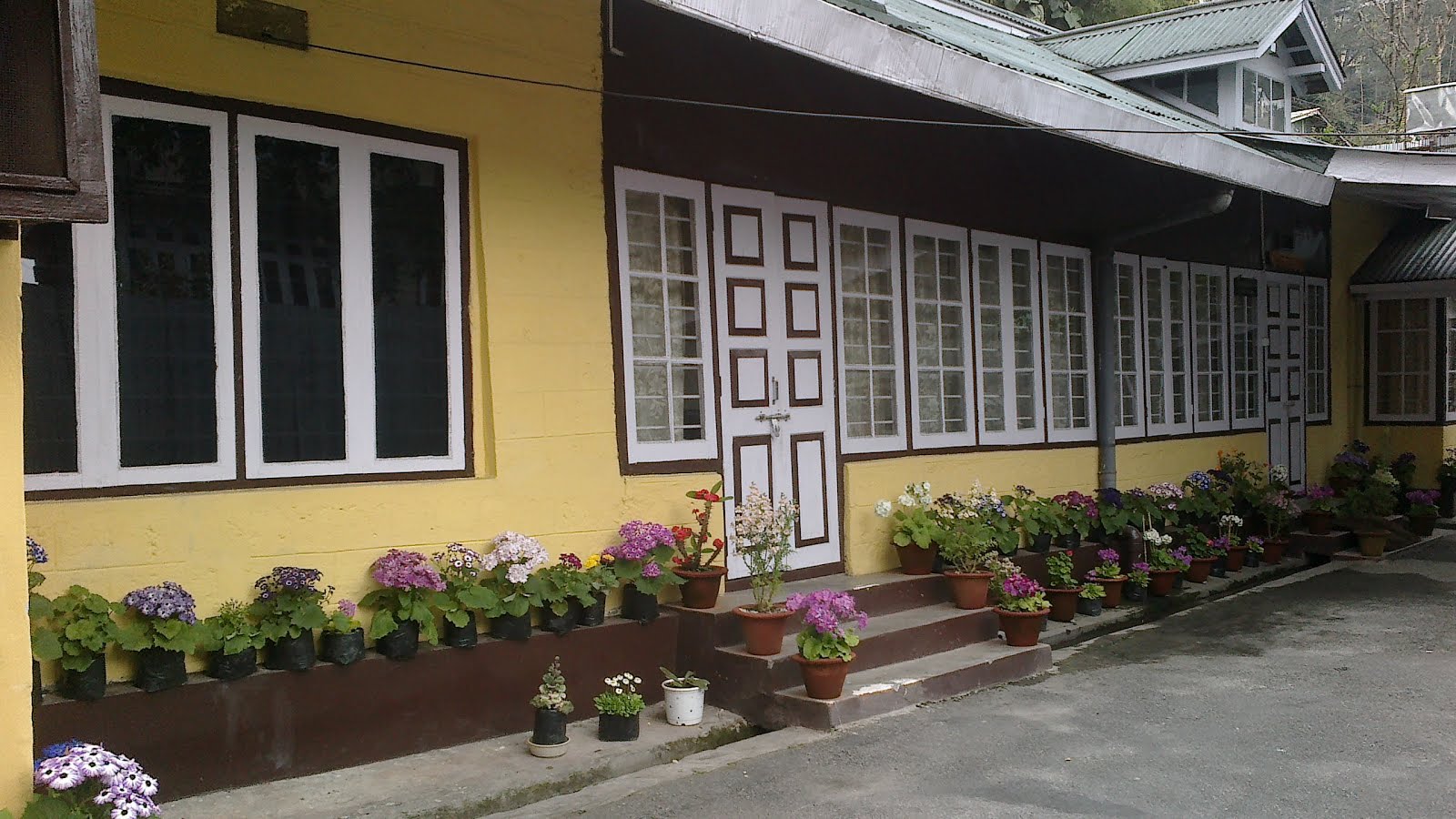







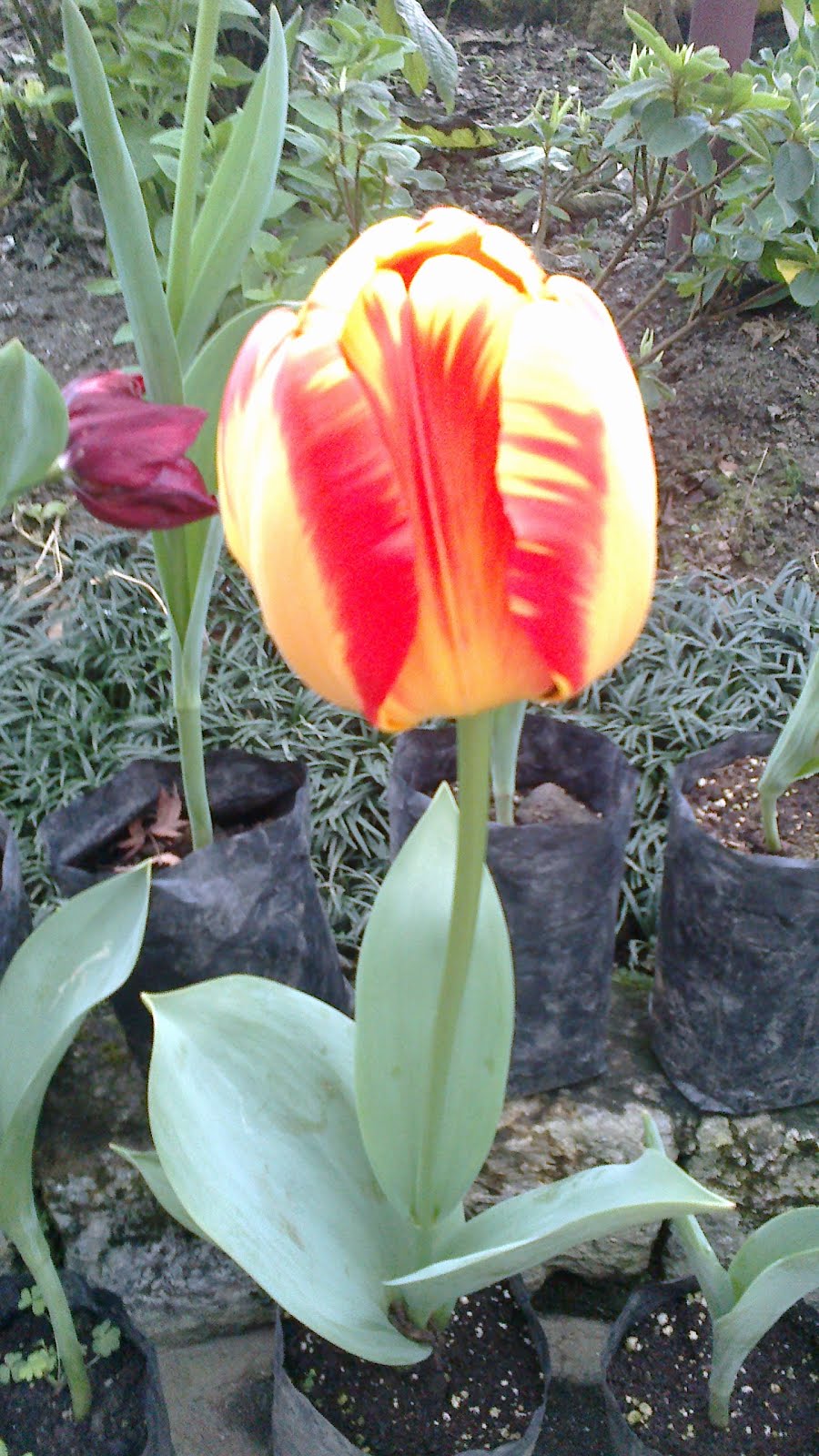
















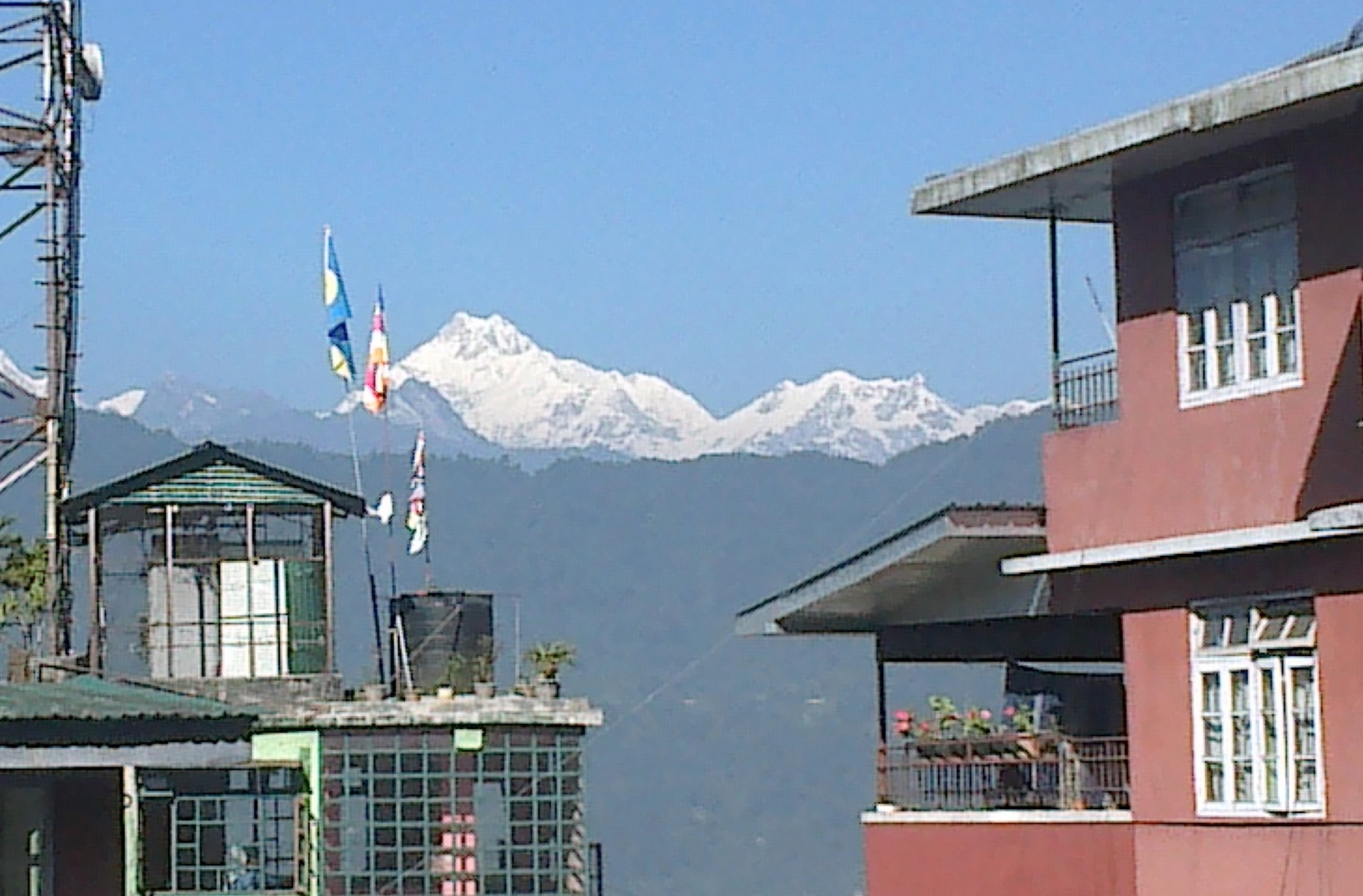


























































































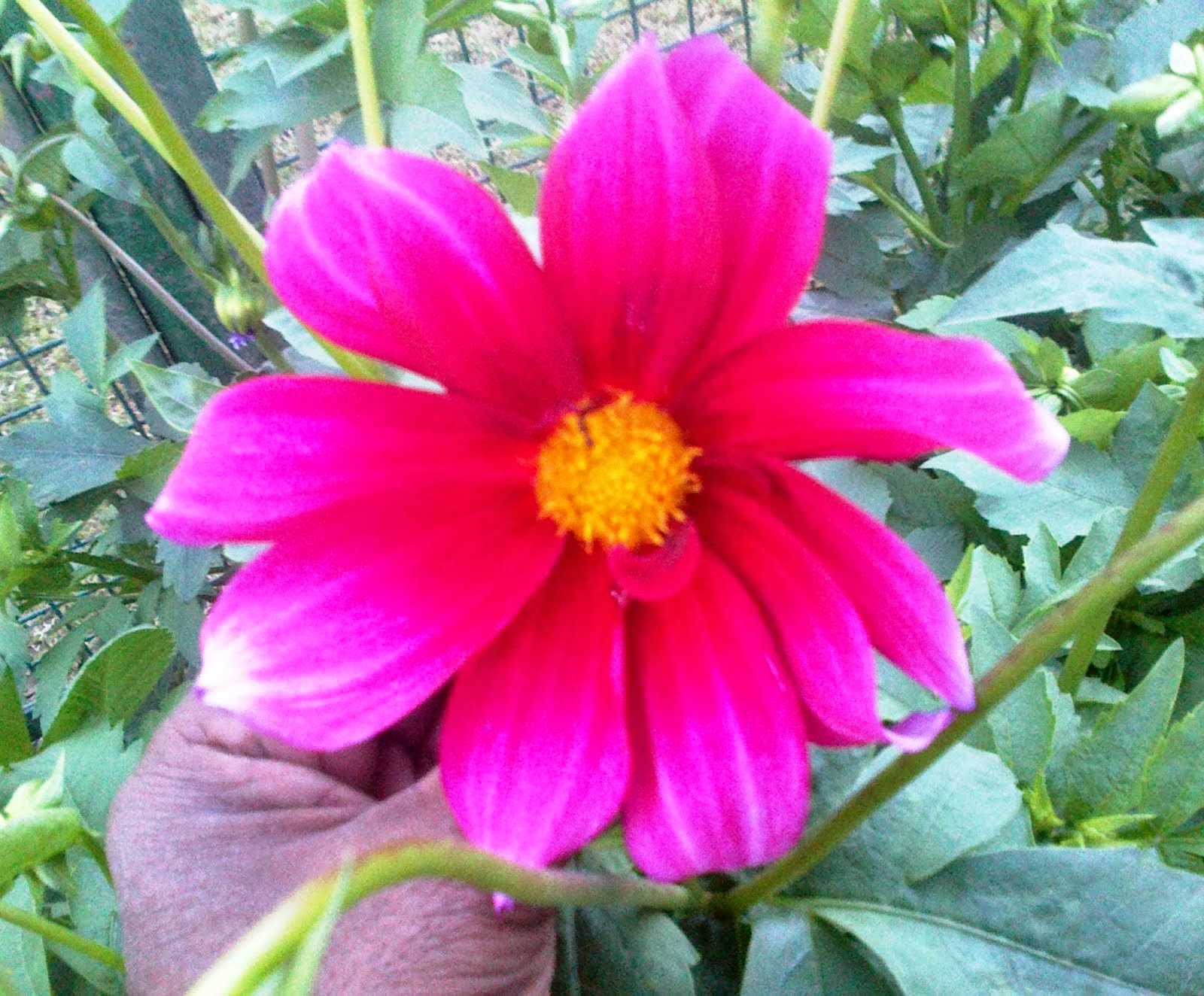



















































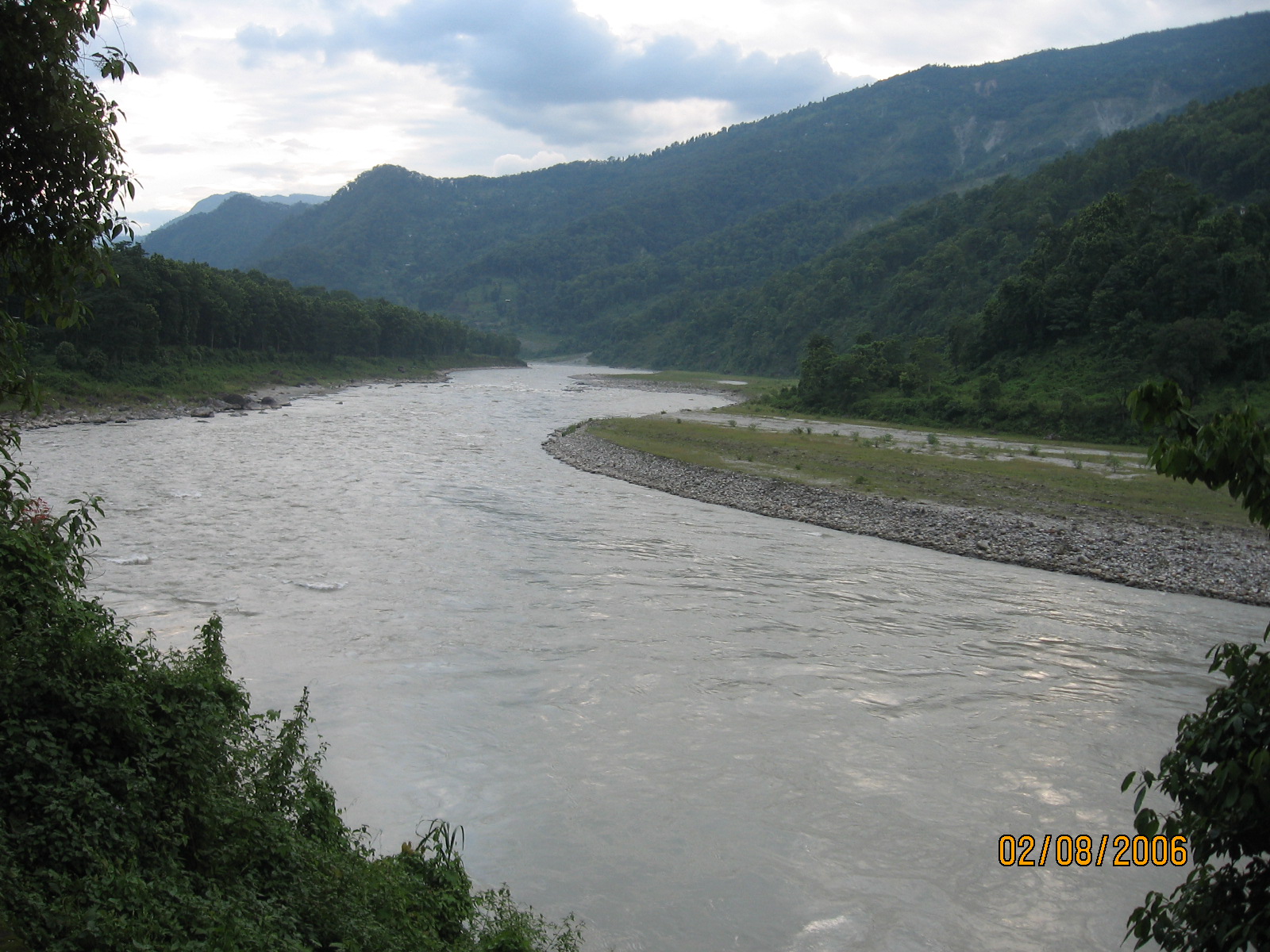

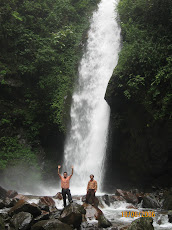
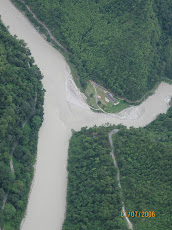
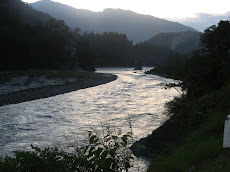
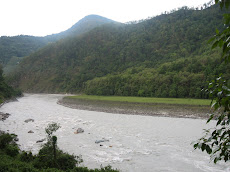
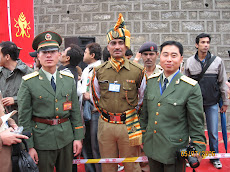
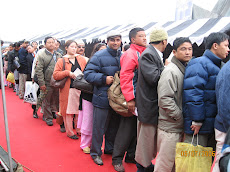
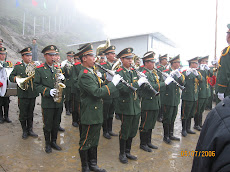


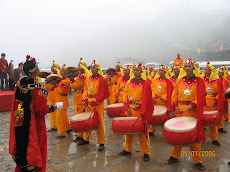
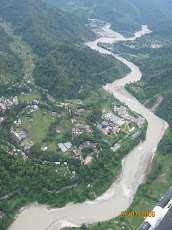




















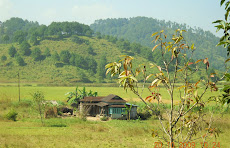
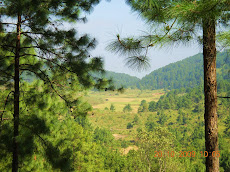








.jpg)







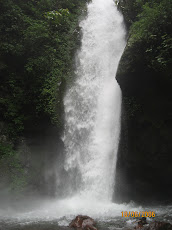
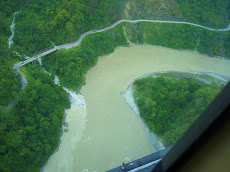


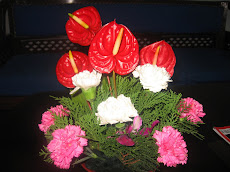





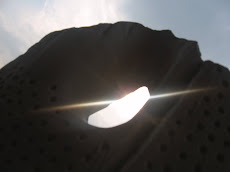
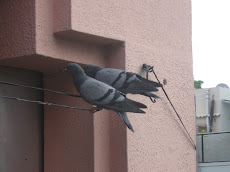
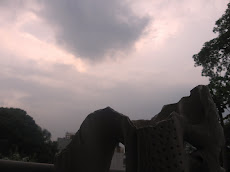
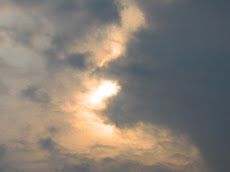
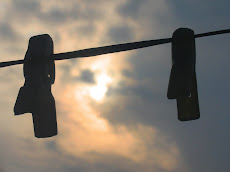
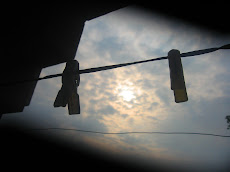

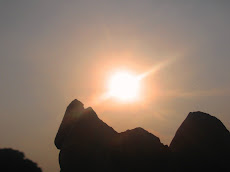
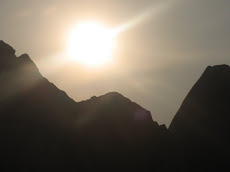
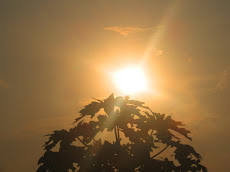


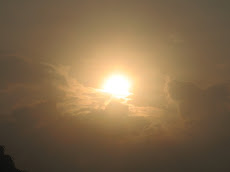

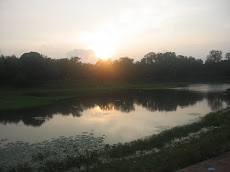
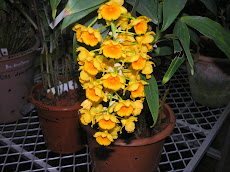
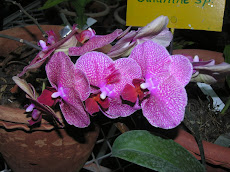

























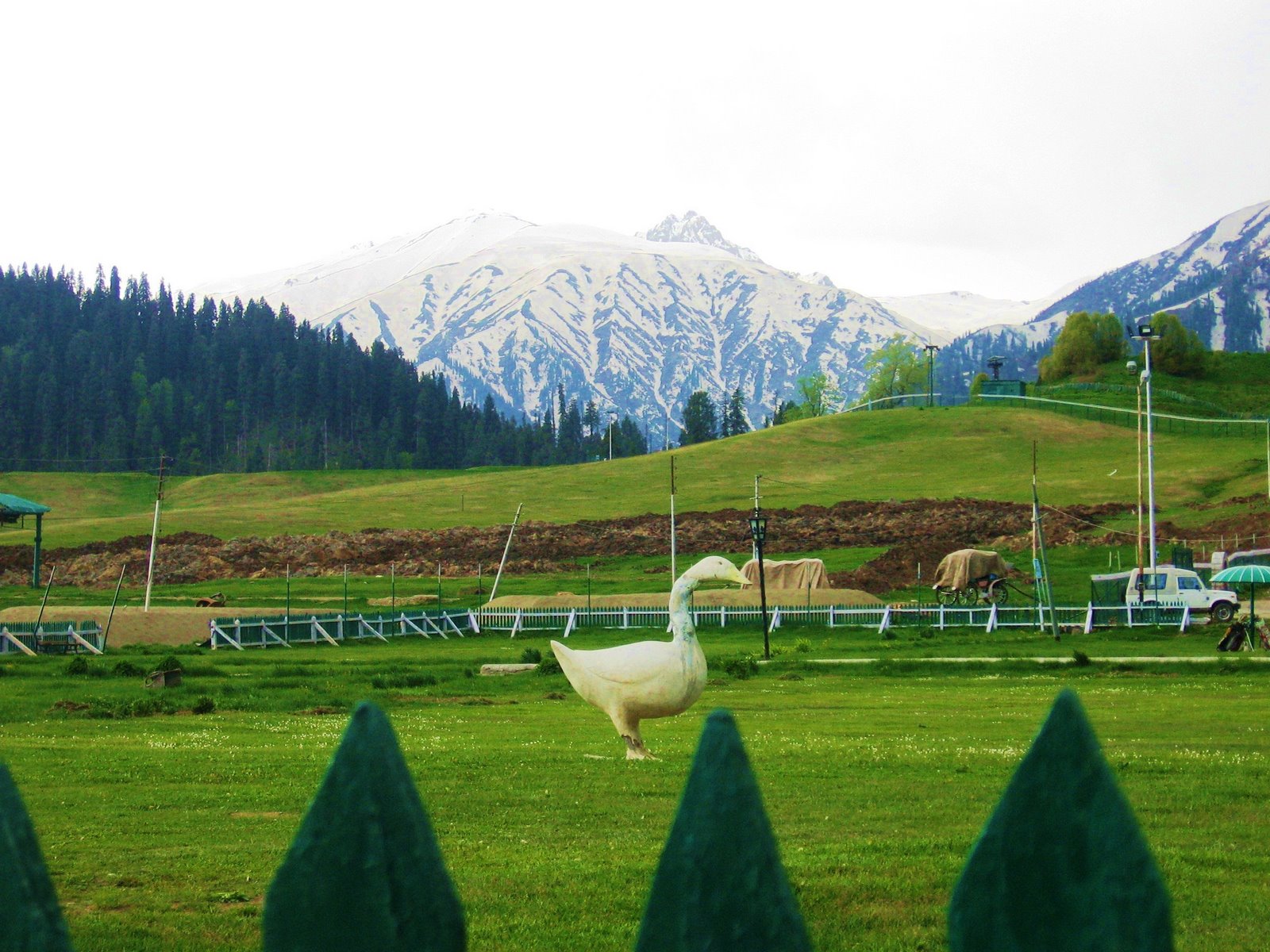
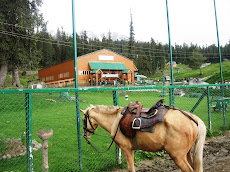
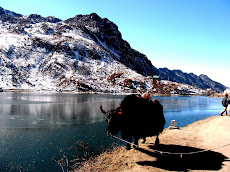






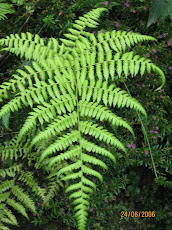

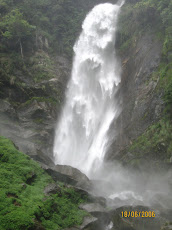



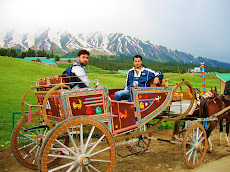






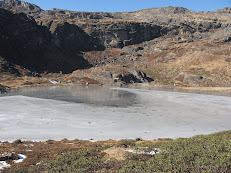

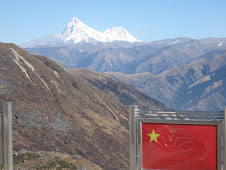



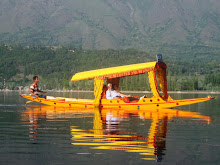
No comments:
Post a Comment